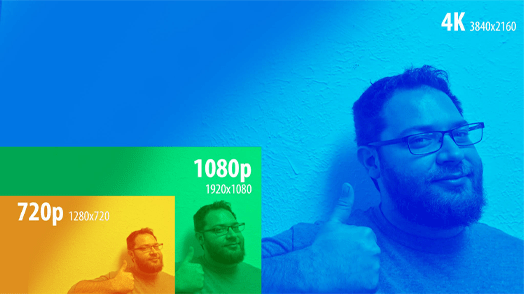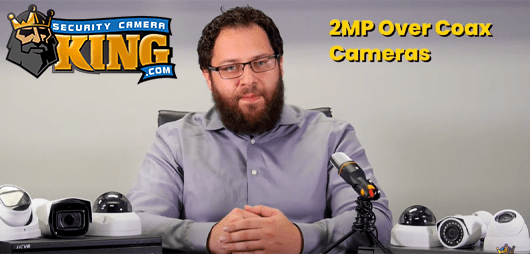

Today, devices from televisions to mobile phones are being able to project lifelike videos and realistic motion. This is something that has become possible for our everyday videos and movies. When it comes to our security cameras, we may want to record with the same effect as our entertainment but might not have the money or technology. So we have a choice: either lose camera resolution or frame rate. Learning about Frame Rate vs Resolution will help you understand how you can still have the realistic look that we want but fit any budget.
Resolution
When it comes to pictures, the main thing you look for is the resolution of the camera, which is easily defined as the size of the picture. The measurement is in pixels which run horizontal and vertical in a picture. An example would be 1280px horizontal × 720px vertical. The more pixels that you capture in a single picture the more you see. This means when you zoom in on a picture it is possible to see more of the scene. Whether it’s a billboard size picture or capturing the fine detail of a butterfly wing, pixels are what let this happen. Video pixels work the same way as pictures, the only difference is that a video is a collection of pictures clumped together to make a motion picture. The clarity of the video all depends on what resolution it is recorded at. A typical video is recorded at 1080p which in resolution terms is 1920px × 1080px, which is also considered high definition. Most televisions display at 1080p resolution, so anything higher would be overkill. Overall resolution has a great deal to do with the clarity of the picture or video that you are recording or viewing.


Frame Rate
The way a video works is by combining many pictures together, like a flipbook, and playing them out at a certain speed to create a realistic motion. The speed at which the pictures are played back is the frame rate, usually measured in seconds. The human eye can only see 10-12 frames individually but as the frames increase your brain can’t depict them, so it starts to become real-time. The normal frame rate for when things start to look real is around 24-30 FPS (frames per second). Frame rate is most important in cinema movies and video games where every millisecond can make the difference. Displaying anything higher than 120 FPS is just used to show slow motion footage for sports or high speed activity. As the frame rate starts to slow down, the video becomes choppy and you might miss things that happen in between frames. Having a sufficient frame rate is important in some cases but can be tweaked when needed.

What’s More Important?
Understanding how Resolution and Frame Rate work and the benefits of both can help you choose which one is more important if one were suppressed. The most important out of the two would be resolution when it applies to security cameras. The reason for this is because having a higher resolution will give you a better picture of what you’re capturing.
If needed, you could zoom in on a face or see exactly what was taken. When talking about zoom with a high resolution camera there are two different types. One is an optical zoom, which uses optical lenses to zoom in on an event without distorting the image itself. The other is called a digital zoom, which means that given a high resolution image, you can zoom in on an event and be able to make out what is happening with minimal distortion. Frame rate is important so you can gather more footage in a second. Adjusting the frame rate of a camera down to 8-10 FPS will still allow you to collect a sufficient amount of footage so you won’t miss anything. It does tend to cause the playback to become a little choppy, but in the case of security cameras, it does not need to playback like a cinema movie. If you set your DVR/NVR to use a higher resolution and a lower frame rate, you can attach more cameras to cover more ground and for every camera have the highest resolution recording. That means that for every second of every camera you have, 8-10 pictures to review is more than enough evidence to catch anyone in the act.
Help Your Budget

Knowing what you want to spend on a camera system will help you make a better decision on what is possible for you project. Retailers might try to deter you from asking questions about frame rate and resolution because their systems record at the lowest resolution possible and 10 FPS. They sell these units at low prices but as the old saying goes, “you get what you pay for,” and that applies to cameras as well. With high quality products it is possible to achieve high resolution video with 30 FPS on all channels but your equipment will not come cheap. In some cases this might be necessary, but in a residence or a small business you can get away with lowering the frame rate. That doesn’t mean you have to resort to a cheap system found at your local name brand store, you just have to do your research and be sure to ask the right questions. Doing so will help you save money not only on your DVR/NVR system, but also on your cameras, cables, switches, and hard drives.
Conclusion
Resolution and Frame Rate are two very important things to look for when buying a camera system and are almost always overlooked by consumers as a bargaining tool. Learning about the two can help you understand why frame rate can be adjusted to achieve a higher resolution and still capture what you need. It also helps complete your project by staying within a budget.


